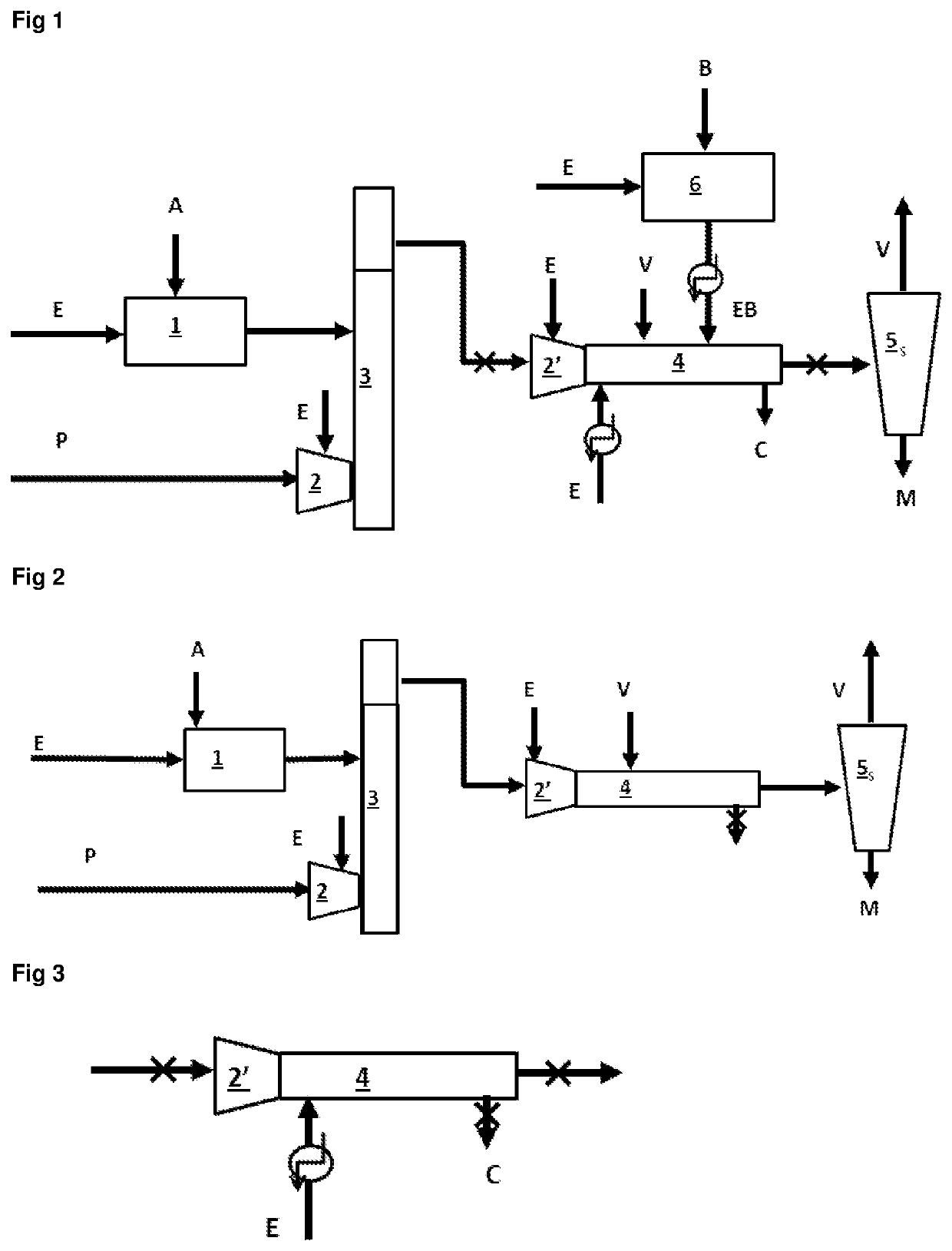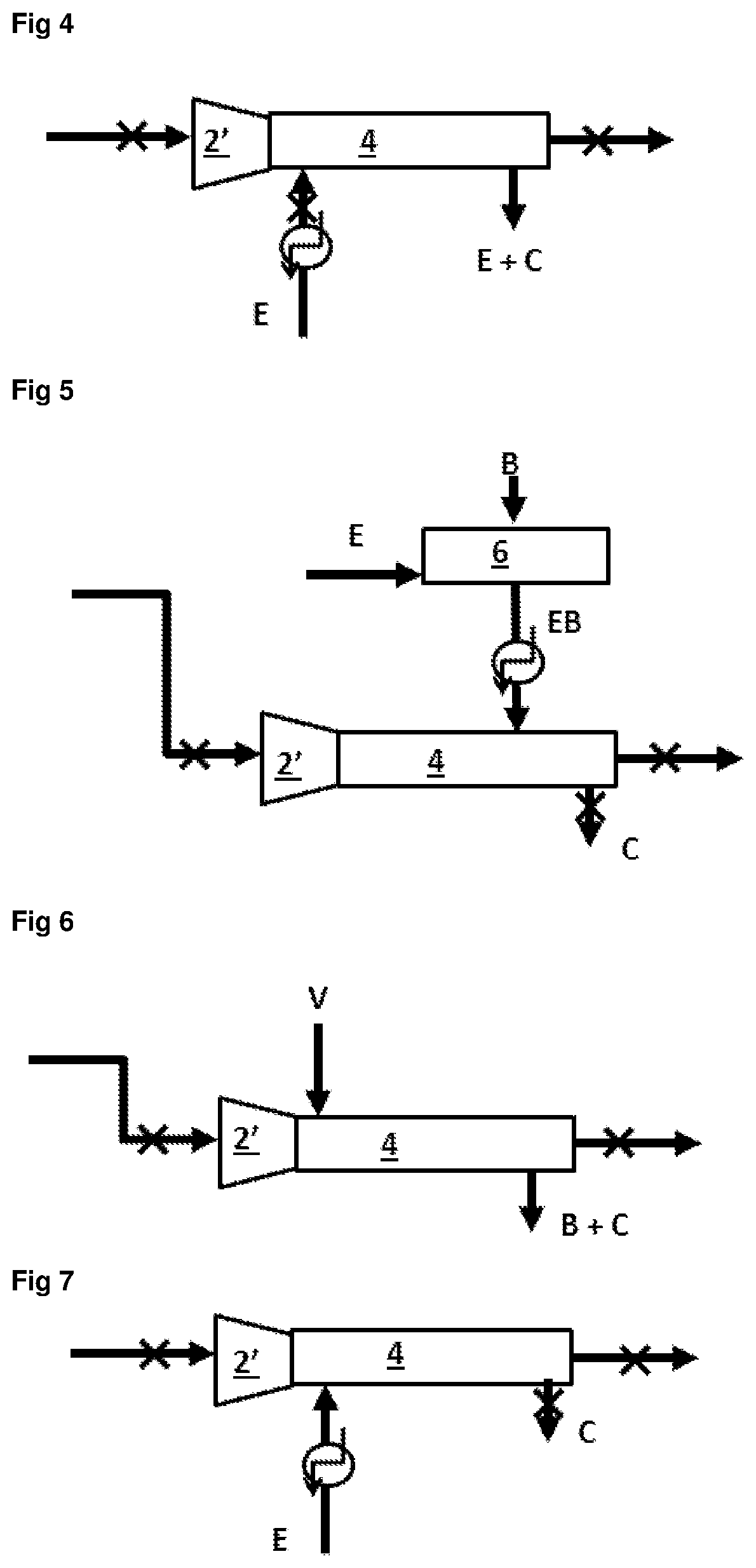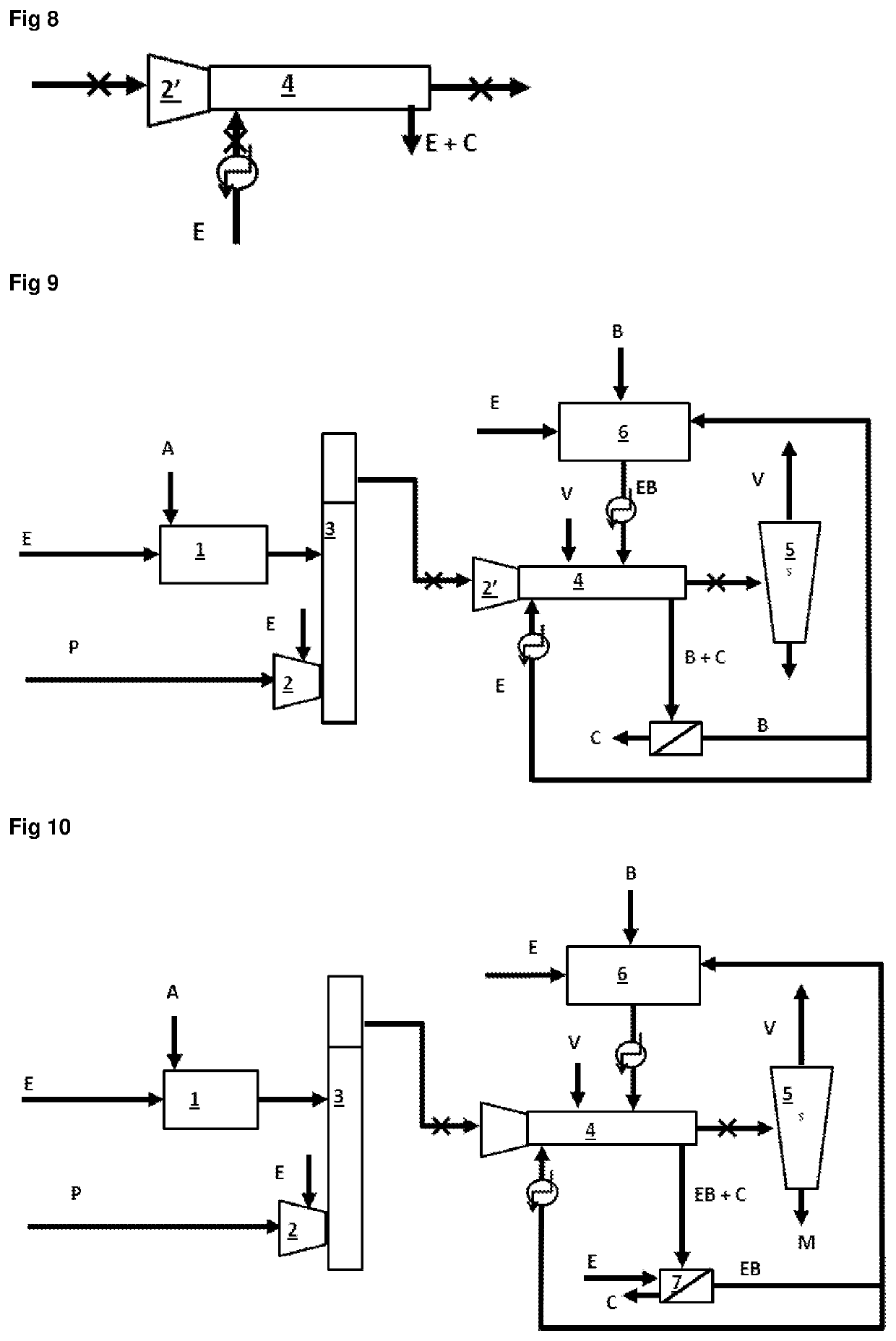Method for cleaning a reactor for processing a lignocellulosic biomass
a technology of lignocellulosic biomass and reactor, which is applied in the direction of biomass after-treatment, hollow article cleaning, biofuels, etc., can solve the problems of increasing the difficulty of conveying biomass within the reactor, increasing the difficulty of contacting the basic solution with the inside walls of the reactor, and increasing the difficulty of enzyme access to raw cellulose in the native substrate. , to achieve the effect of facilitating the action of detaching residues and enhancing the effect o
- Summary
- Abstract
- Description
- Claims
- Application Information
AI Technical Summary
Benefits of technology
Problems solved by technology
Method used
Image
Examples
example 1
cordance with the Invention
[0066]This example was carried out with wheat straw as biomass. The characteristics and composition of the feedstock are as follows:
Solids content (SC): 91.07%
Biomass flow rate: 65 kg SC / h
[0067]The operating conditions for producing the pretreated biomass are as follows:
Impregnation for production and cleaning in the impregnation reactor 3:
H2SO4 acidic solution flow rate: 1.5 kg / h (pH close to 1)
Steam explosion of the impregnated biomass in the pretreatment reactor 4:
Residence time: 5 min
Duration of production: 72 hours
Prior-art mechanical cleaning:
Temperature decrease: 48 hours
Duration of opening and disassembly: 8 hours
Duration of cleaning: 8 hours
Duration of reassembly: 8 hours
[0068]The mass of coke C produced is 16 kg, occupying a volume of 0.012 m3 in the reactor 4, giving a reduction in reactor volume of 8.7% and a coke production rate of 222 g / h.
example 2
ance with the Invention
[0069]The impregnation and steam explosion are performed under the same conditions and with the same biomass as in example 1.
[0070]The halt in production is followed immediately by cleaning of the reactor 4 in accordance with the invention, under the following conditions:
Water bath at 80° C. with a degree of filling of 100%, then immediate draining of the reactor,
Immersion of the entirety of the useful internal volume (corresponding to a degree of filling of 100%) of the reactor 4 in the basic solution B containing 3% of KOH, corresponding to an initial pH before injection into the reactor of 13.6. Before being injected, the basic solution was heated at 80° C. for 2 hours. The reactor 4 is then drained,
Heating of the reactor 4 for 2 hours at 200° C. (no biomass present), by steam injection,
3 rinses with hot water at 80° C. with complete immersion of the internal volume of the reactor 4 (degree of filling: 100%), then immediate draining
PUM
| Property | Measurement | Unit |
|---|---|---|
| temperature | aaaaa | aaaaa |
| temperature | aaaaa | aaaaa |
| temperature | aaaaa | aaaaa |
Abstract
Description
Claims
Application Information
 Login to View More
Login to View More - R&D
- Intellectual Property
- Life Sciences
- Materials
- Tech Scout
- Unparalleled Data Quality
- Higher Quality Content
- 60% Fewer Hallucinations
Browse by: Latest US Patents, China's latest patents, Technical Efficacy Thesaurus, Application Domain, Technology Topic, Popular Technical Reports.
© 2025 PatSnap. All rights reserved.Legal|Privacy policy|Modern Slavery Act Transparency Statement|Sitemap|About US| Contact US: help@patsnap.com



